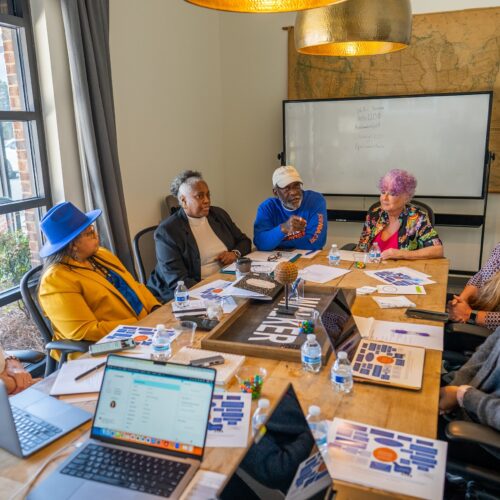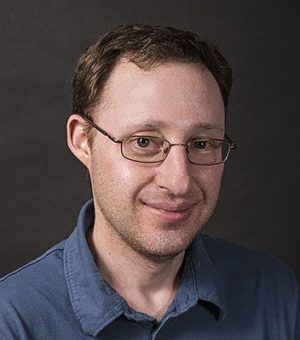
Over the course of the COVID crisis, we’ve heard a lot about curves. Graphs show terrifying projections of how infection rates will spike and strain our healthcare system if we don’t take dramatic steps to slow the virus’s spread. While corrections leaders struggle to socially distance people in confined quarters, juvenile justice leaders’ success over the past two decades puts them in a better position than their adult counterparts to stay ahead of that curve.
Since 2000, juvenile incarceration rates have been cut by more than half nationwide. That leaves fewer young people in congregate settings where disease spread is particularly challenging to control. Juvenile justice leaders deserve credit for the foresight that has placed them in this relatively enviable position.
But the progress that has juvenile justice systems in a position to lead during this crisis will likely be challenged significantly in the months and years to come. With many economists predicting a recession, state and local juvenile justice agencies may face the prospect of significant budget cuts and pressure to put the brakes on current improvement efforts in order to focus on their core responsibilities of care, custody and control.
But if this moment teaches us anything, it is the value of staying ahead of the curve. Juvenile justice leaders have already shown us a vision of what is possible, one that relies of cross-system planning and collaboration with varying levels of financial support. They can do it again. Here’s how:
Increase reliance on community-based programs. Despite the significant drop in the overall juvenile justice population, 15 to 25 percent of long-term sentences to detention or incarceration are due to technical violations of community supervision. And sentences to group homes, probation camps, and residential treatment centers—often handed down to youth who face behavioral health challenges and highly unstable home environments—remain common.
To stay ahead of the curve, juvenile justice agencies should continue to foster the use and growth of intensive community-based programs, an alternative to incarceration known to be more effective at meeting young people’s needs and more cost-efficient. These services exist in many communities but are underutilized. In others, service gaps remain that must be closed.
Juvenile justice systems should continue to eliminate unnecessary out-of-home placements and partner with other service systems. The resources saved could be redirected to help establish a broad array of research-based services that can support youth safely in the community.
Divert low-risk youth out of the justice system. The research is clear: Justice system involvement for youth to deter low-risk youth from reoffending can have the opposite effect, increasing their likelihood to reoffend and preventing them from finishing high school.[1] But more than 800,000 young people are still arrested annually. Just 6 percent of those arrests are for violent offenses, and less than 30 percent of all juvenile court petitions are for an offense involving another person.[1]
Opportunities clearly remain to divert low-risk youth away from the justice system. By leveraging services offered by other systems and providers, juvenile justice systems can help youth get the care and services they need in a more appropriate setting: their communities. Doing so will also enable juvenile justice systems to focus their own increasingly limited resources on youth who actually pose a risk to public safety.
Clear pathways to education and employment. In the wake of the economic disruption wrought by the COVID-19 crisis, education and workforce development will be more critical than ever for youth and young adults in the justice system. Without these supports, such young people will be poorly positioned to compete for jobs in those fields that are seeing growth, like healthcare and logistics.
There are specific steps that can be taken now to build up these services. They include maximizing available federal and state funding, creating pathways to credentials that are demanded by the local labor market, and addressing barriers and restrictions that limit or dissuade people with a criminal record from accessing education and employment.
But our recent studies suggest that the partners who need to come together to take these steps—justice systems, workforce development agencies, postsecondary institutions, and employers—do not collaborate often enough. Improved long-term planning and collaboration can help juvenile justice and other service systems ensure that young people—often an untapped labor pool—are best positioned to meet emerging market needs.
What lies ahead will challenge juvenile justice agencies in ways we can’t anticipate. But in good times and especially bad, it’s always smart to be ahead of the curve. Juvenile justice agencies now have an opportunity to lean into the winning formula of the past two decades: committing to continued improvements and relying on closer partnerships with other service systems and communities. They will no doubt thank themselves later.
Editor’s Note: This is the third installment in a series related to COVID-19 and its impact on the criminal and juvenile justice systems. For more guidance related to the outbreak, visit the new resource website launched by The Council of State Governments.
Photo credit: Aswin Deth and nrd via Unsplash
About the Authors
A positive school experience, where a child feels secure, is essential for their well-being. However, for many children…
Read MoreWhen returning to their communities from criminal justice settings, people with behavioral health needs face barriers in accessing…
Read More Supporting Children of Incarcerated Parents: Reimagining School and Community Collaboration
Supporting Children of Incarcerated Parents: Reimagining School and Community Collaboration
A positive school experience, where a child feels secure, is essential for…
Read More Bridging Communities and Correctional Systems: Q&A with CSG Justice Center Advisory Board Member Commissioner Nicholas Deml
Read More
Bridging Communities and Correctional Systems: Q&A with CSG Justice Center Advisory Board Member Commissioner Nicholas Deml
Read More
 Assigned to the Cloud Crew: The National Incarceration Association’s Hybrid Case Management for People with Behavioral Health Needs
Assigned to the Cloud Crew: The National Incarceration Association’s Hybrid Case Management for People with Behavioral Health Needs
When returning to their communities from criminal justice settings, people with behavioral…
Read More Meet the Medicaid and Corrections Policy Academy Mentor States
Meet the Medicaid and Corrections Policy Academy Mentor States
New Hampshire Department of Corrections Commissioner Helen Hanks presents at the Medicaid…
Read More Taking the HEAT Out of Campus Crises: A Proactive Approach to College Safety
Taking the HEAT Out of Campus Crises: A Proactive Approach to College Safety
The sharp rise in school shootings over the past 25 years has…
Read More












